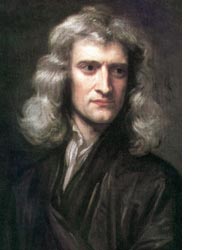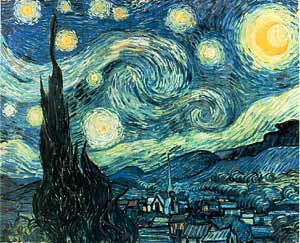![]()
![]()
The ancient Greeks not only tried to describe the world, but they also tried to explain why the cosmos behaves as it does. The study of HOW objects move came to be know by the term kinematics. WHY objects move, so capably explained by Aristotle, became known as dynamics.
Like most human efforts, the Greek explanations were not perfect. Over the centuries a few weaknesses were found. Several noteworthy Arabs proposed improvements. By 1630, nearly 20 centuries after Aristotle's original efforts, most educated people in the western hemisphere still found the his Greek explanations substantially matched the observed world. Aristotle's explanations still seemed reasonable.
One of the weakest Greek explanations was that of motion. Most particularly falling objects didn't behave exactly like the Greeks claimed. The Greeks had suggested that the elements of the world, earth, water, air, and fire, all have their natural place. Earth, being the heaviest, belongs at the center of the Earth which was also the center of the universe. It was natural,
requiring no further explanation, for objects to move up or down to where they belonged. So bubbles of air float upward in water as does wood which contains more air than earthy ashes. This, plus the other natural motions of living things and heavenly bodies caused all other changes. That all seemed reasonable. But projectiles posed considerable difficulties. A living person could throw a projectile, but why did it keep going and not immediately fall upon its release? Many agreed with an Arab proposal that a projectile might contain something called impetus that would carry it a ways, but once consumed, would allow the projectile to belatedly fall. Galileo Galilei in his Discourses and Mathematical Demonstrations Concerning Two New Sciences (1638) attacked this weakness and argued that Aristotle's explanation of falling could not be correct.
For example Galileo considered the fall of two objects of different weights tied together. Aristotle said the heavier fell faster. Tied together, the heavier would tug on the lighter making it faster, and the lighter would retard the heavier, so that together they would have an intermediate speed. But considering that the combined mass would be greater than either separately, so the combined objects would be required to fall even faster than the heavier alone. So Aristotle's explanation was internally contradictory. The objects tied together couldn't have both kinematics! So Aristotle's dynamics could not possibly be correct. While Galileo attacked the Greek kinematics, he had no replacement for the Greek dynamics.

 Isaac Newton (b1642, d1727 ←portrait at left), who was born in a hamlet north of London on Christmas Day of the same year Galileo died, quietly and masterfully provided a replacement dynamics. Rather than attempt to PROVE Newton was right, we might first try to fathom the significance and implications of his proposal. Newton was a very solitary person who developed his own private understanding of the principles governing motion. In 1684 Newton's acquaintance, Edmund Halley, asked Newton's thoughts about the motion of planets. (René Descartes had proposed that planets' orbits are due to fluid vortices.→) Halley, finding Newton's mathematical and physical explanation superb, pushed Newton to further amplify his analysis. Halley arranged for the publication in 1687 of Newton's Philosophiae Naturalis Principia Mathematica. This document is often regarded as the culmination of the Scientific Revolution, in which science as we know it today was born.
Isaac Newton (b1642, d1727 ←portrait at left), who was born in a hamlet north of London on Christmas Day of the same year Galileo died, quietly and masterfully provided a replacement dynamics. Rather than attempt to PROVE Newton was right, we might first try to fathom the significance and implications of his proposal. Newton was a very solitary person who developed his own private understanding of the principles governing motion. In 1684 Newton's acquaintance, Edmund Halley, asked Newton's thoughts about the motion of planets. (René Descartes had proposed that planets' orbits are due to fluid vortices.→) Halley, finding Newton's mathematical and physical explanation superb, pushed Newton to further amplify his analysis. Halley arranged for the publication in 1687 of Newton's Philosophiae Naturalis Principia Mathematica. This document is often regarded as the culmination of the Scientific Revolution, in which science as we know it today was born.
Finally, Newton uses these rules to demonstrate that they account for the motions of the earth, planets, and moons which had been previously meticulously studied and formulated by Johannes Kepler. Newton's laws, coupled with his Law of Universal Gravity and similar laws for other forces, could adequately explain all motions whether here on earth or in the heavens.
Our modern world has provided us with a wealth of low friction toys and measuring devices such as accurate timer-watches and cameras capable of recording video sequences. The purpose is to use whatever equipment is available to try to gather evidence that is consistent with Newton's laws. (See Lab I-1 for hints about measurement tools and analysis.)

awe get a = 2d / t2.
goodtrials.

pulling massby the acceleration due to gravity (found in Experiment I-3). Note that Newton's Third Law says the pull of gravity on the known mass is equal and opposite the pull of that mass on the Earth!
Finally, record your procedures, measurements, and findings in your journal. If you need course credit, use your observations recorded in your journal to construct a technical report
![]()
to skill building exercises:
Summary & Practice of Dynamics:
Vector analysis: describing motion in multiple dimensions
Force analysis: components, parallel forces
Analysis of projectiles, circular & harmonic motions
to next ie-Physics section: Observations of the Sky (astronomy and astrophysics)
to ie-Physics menu
to site menu